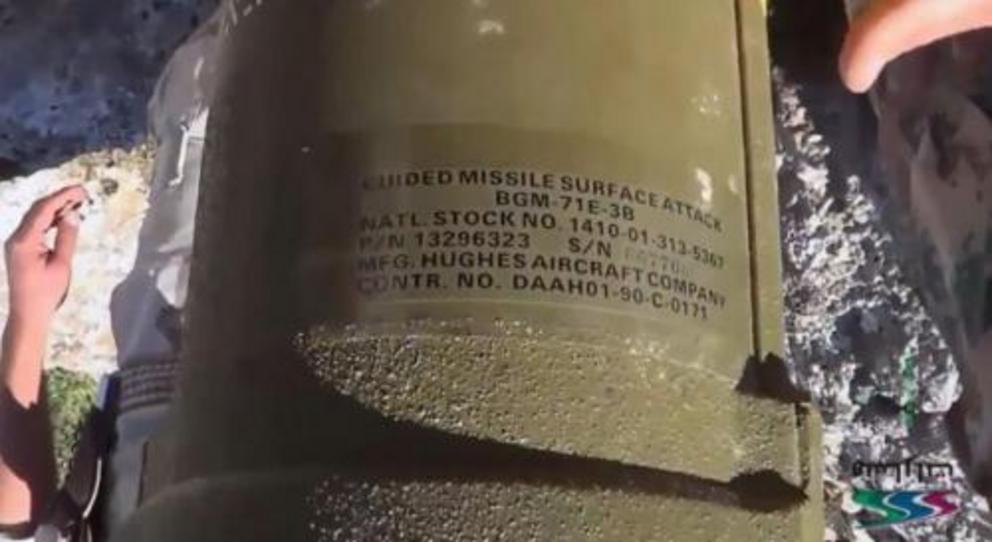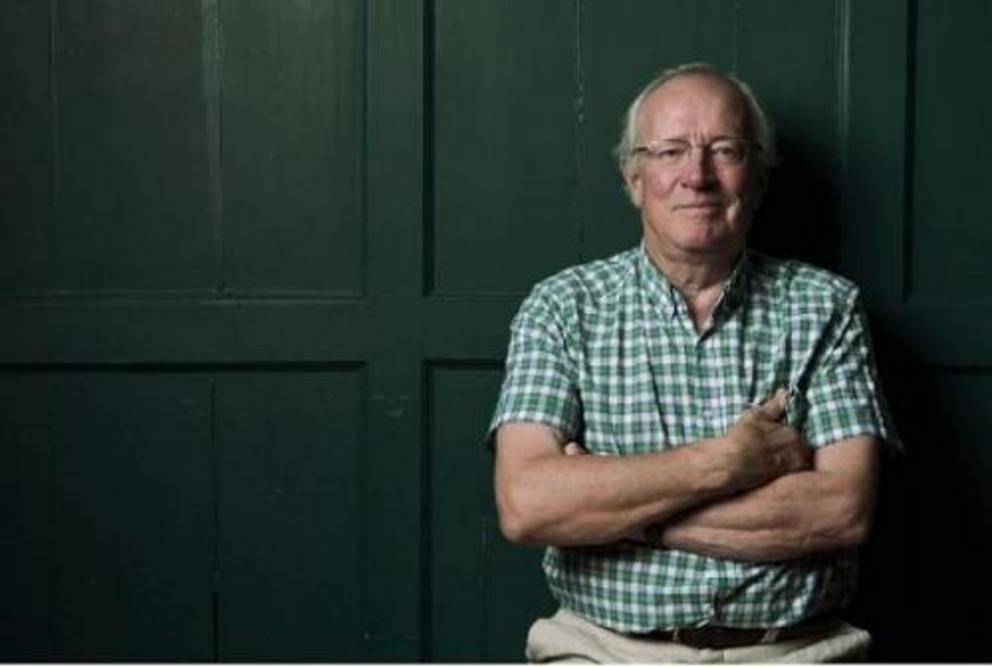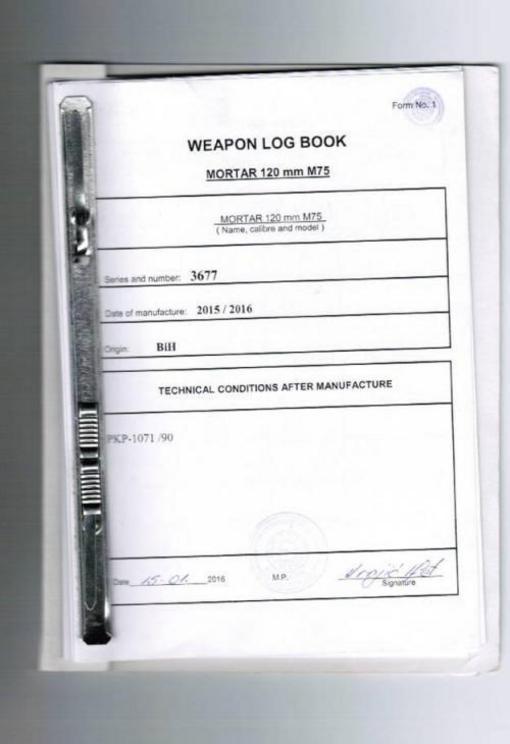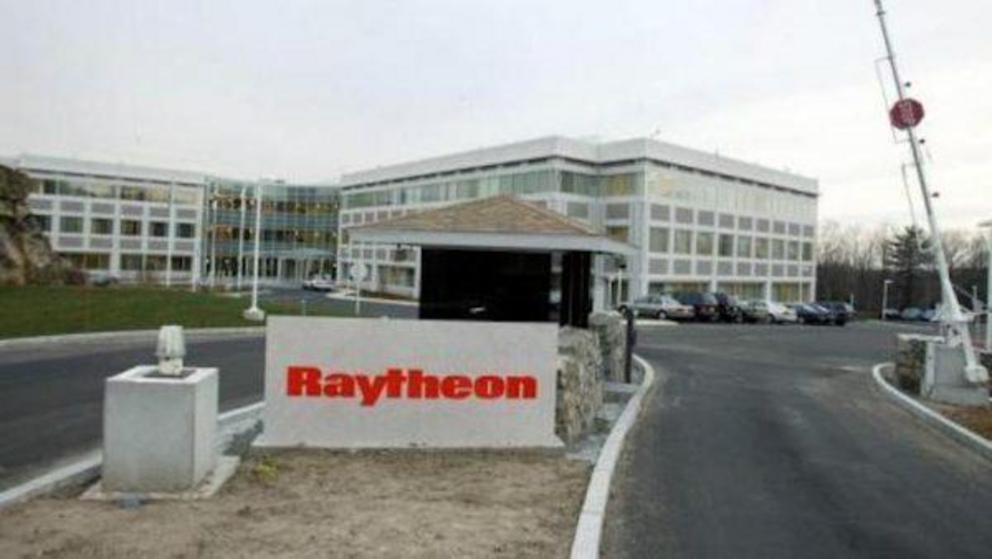Robert Fisk: “I traced Al-Qaeda missile casings in Syria back to their original sellers”
Finally, a journalist for a mainstream UK media outlet is methodically tracking weapons shipment serial numbers and English-language paperwork recovered from al-Qaeda groups in Syria, and he’s literally showing up at arms factories and questioning arms dealers, including officials at the Saudi Embassy in London, asking: why are your weapons in the hands of terrorists?
Veteran Middle East war correspondent Robert Fisk recently published a bombshell report entitled, I traced missile casings in Syria back to their original sellers, so it’s time for the west to reveal who they sell arms to. In it Fisk recalls a bit of detective sleuthing he’s lately been engaged in after stumbling upon a batch of missile casings and shipment paperwork last year hidden in what he describes as “the basement of a bombed-out Islamist base in eastern Aleppo” with the words “Hughes Aircraft Co/Guided Missile Surface Attack” emblazoned on the side of the spent tubes.
Of course, the Syrian government recaptured the area from Islamist insurgents including al-Nusra terrorists and their allies in December 2016, and has made rapid gains throughout the country’s east and south since; and Fisk has been trekking around the country to see what he can find.
His “detective story” as he calls it actually seems to solicit the help of the public, and begins as follows:
Readers, a small detective story. Note down this number: MFG BGM-71E-1B. And this number: STOCK NO 1410-01-300-0254. And this code: DAA A01 C-0292. I found all these numerals printed on the side of a spent missile casing lying in the basement of a bombed-out Islamist base in eastern Aleppo last year. At the top were the words “Hughes Aircraft Co”, founded in California back in the 1930s by the infamous Howard Hughes and sold in 1997 to Raytheon, the massive US defence contractor whose profits last year came to $23.35bn (£18bn). Shareholders include the Bank of America and Deutsche Bank. Raytheon’s Middle East offices can be found in Saudi Arabia, the United Arab Emirates, Israel, Egypt, Turkey and Kuwait.
There were dozens of other used-up identical missile casings in the same underground room in the ruins of eastern Aleppo, with sequential codings; in other words, these anti-armour missiles – known in the trade as Tows, “Tube-launched, optically tracked and wire-guided missiles”…

A prior spent missile tube in Syria with “Hughes Aircraft Company” listed as manufacturer which surfaced in 2014 (not part of the same batch of weapons analyzed in Fisk’s report). Notice the attempt to scratch off the serial numbers. Via Armament Research Services
The past year especially has seen an uptick in such systematic attempts to trace foreign-supplied weapons on the Syrian battlefield, most of them recovered from internationally designated terrorists groups (even ISIS), back to their origination points. We’ve previously detailed a number of these reports, for example: Journalist Interrogated, Fired For Story Linking CIA And Syria Weapons Flights as well as Weapons Went From The CIA To ISIS In Less Than Two Months — the latter based on extensive arms tracking and field forensics research produced by Conflict Armament Research (CAR).
Robert Fisk, however, represents the rare instance of a prominent journalist on a lone mission to trace weapons serial numbers recovered from the foreign-backed Syrian insurgency back to their origins in the United States (worrisome for US intelligence and military leaders, as The Guardian has called him “one of the most famous journalists in the world” for his being unrelenting in his investigations).
Fisk continues by relating the moment he confronted a former Hughes Aircraft (now Raytheon) executive about finding their product in the hands of terrorists:
Some time ago, in the United States, I met an old Hughes Aircraft executive who laughed when I told him my story of finding his missiles in eastern Aleppo. When the company was sold, Hughes had been split up into eight components, he said. But assuredly, this batch of rockets had left from a US government base. Amateur sleuths may have already tracked down the first set of numbers above. The “01” in the stock number is a Nato coding for the US, and the BGM-71E is a Raytheon Systems Company product. There are videos of Islamist fighters using the BGM-71E-1B variety in Idlib province two years before I found the casings of other anti-tank missiles in neighbouring Aleppo. As for the code: DAA A01 C-0292, I am still trying to trace this number.
Fisk writes further that even if he doesn’t ultimately come up with the American base from which the missiles originated, as well as specific factory they were made, he knows one thing for sure, that both Hughes/Raytheon and the US government have erected a paper trail system designed to shield them from violating anti-terror laws.

Robert Fisk recently drew controversy after writing that he failed to find evidence of a government chemical weapons attack on Douma as the first journalist to enter the site and interview eyewitnesses.
He explains of this legal cover, “This missile will have been manufactured and sold by Hughes/Raytheon absolutely legally to a Nato, pro-Nato or “friendly” (i.e. pro-American) power (government, defence ministry, you name it), and there will exist for it an End User Certificate (EUC), a document of impeccable provenance which will be signed by the buyers – in this case by the chaps who purchased the Tow missiles in very large numbers – stating that they are the final recipients of the weapons.”
And yet there’s no actual way of knowing that the official “recipients” identified as the “end user” are in fact the end users, as Fisk’s investigation proves (for the fact that he found the missile batch in a former Nusra/ISIS/al-Qaeda stronghold).
How many of these advanced Raytheon-made weapons does al-Qaeda still have in its possession? Does anyone in Washington or London even care?
He points out that “there is neither an obligation nor an investigative mechanism on the part of the arms manufacturers to ensure that their infinitely expensive products are not handed over by ‘the buyers’ to Isis, al-Nusra/al-Qaeda – which was clearly the case in Aleppo – or some other anti-Assad Islamist group in Syria branded by the US State Department itself as a ‘terrorist organisation'”. So much for US anti-terror material support laws huh?
Naturally, Fisk follows up with an appropriately sarcastic quip:
Of course, the weapons might have been sent (illegally under the terms of the unenforceable EUC) to a nice, cuddly, “moderate” militia like the now largely non-existent “Free Syrian Army”, many of whose weapons – generously donated by the west – have fallen into the hands of the “Bad Guys”; i.e. the folk who want to overthrow the Syrian regime (which would please the west) but who would like to set up an Islamist cult-dictatorship in its place (which would not please the west).
Indeed it confirms what former MI6 spy and British diplomat Alastair Crooke once stated — that the CIA knowingly established the basis of a “jihadi Wal-Mart” of sorts — to which ISIS had immediate and easy access. Crooke noted that the weapons program was set up with “plausible deniability” in mind, which would allow its American intelligence sponsors to be shielded from any potential future legal prosecution or public embarrassment.
Crooke noted in a 2015 BBC interview that, “The West does not actually hand the weapons to al-Qaida, let alone to ISIS…, but the system they’ve constructed leads precisely to that end.”
Fisk confirms this analysis when he concludes, Thus al-Nusra can be the recipients of missiles from our “friends” in the region – here, please forget the EUCs – or from those mythical “moderates” who in turn hand them over to Isis/al-Nusra, etc, for cash, favours, fear or fratricidal war and surrender.
And then he shreds both the weapons companies and Western governments that make it all happen, noting that though a certain weariness, banality and self-imposed ignorant laziness has generally set in when it comes to major media investigating these things, this continues to be a huge, scandalous story of epic dimensions that ought to demand exposing all involved.
Fisk rages:
Why don’t Nato track all these weapons as they leave Europe and America? Why don’t they expose the real end-users of these deadly shipments? The arms manufacturers I spoke to in the Balkans attested that Nato and the US are fully aware of the buyers of all their machine guns and mortars.
Why can’t the details of those glorious end user certificates be made public – as open and free for us to view as are the frightful weapons which the manufacturers are happy to boast in their catalogues.
Though dutifully ignored in the American mainstream press (and thus we feel it our duty to continue the coverage), Fisk is in the midst of a multi-part investigative series for his the Independent (UK) — recently tracking foreign supplied arms to the doorsteps of US-partnered suppliers in the Balkans, as well as the Saudi embassy in London, where he presented shipping and manufacturer’s paperwork proving that various medium weaponry went straight from European factories to terrorist group in Syria via the Saudis (including munitions factory workers’ eyewitness accounts of Saudi officials inspecting the facility).

The Independent has published over a dozen items of paperwork recovered from al-Nusra (Syrian al-Qaeda) positions in Aleppo.
Predictably, Saudi officials denied the evidence, saying the Kingdom did not give “practical or other support to any terrorist organisation [including Nusrah and Isis] in Syria or any other country” and described the allegations raised by The Independent as “vague and unfounded”.
Fisk responds in his latest column:
These papers were not “vague” – nor was the memory of the Bosnian arms controller who said they went with the mortars to Saudi Arabia and whose shipment papers I found in Syria. Indeed, Ifet Krnjic, the man whose signature I found in eastern Aleppo, has as much right to have his word respected as that of the Saudi authorities. So what did Saudi Arabia’s military personnel – who were surely shown the documents – make of them? What does “unfounded” mean? Were the Saudis claiming by the use of this word that the documents were forgeries?
And Fisk answers his own question in concluding, “I bet they’re not,” explaining, “For I don’t think either Nato or the EU has the slightest interest in chasing the provenance of weapons in the hands of Islamist fighters in Syria or anywhere else in the Middle East – certainly not in the case of Damascus, where the west has just given up its attempt to unseat Assad.”
* * *
We might also recall, lest it disappear down the collective public memory hole forever, that all the way back in 2013 when as all analysts agree the Obama White House came very close to launching an Iraq-style war of regime change against Damascus… guess who was a foremost media “expert” aggressively lobbying for regime change?
At that time Stephen Hadley, then a Raytheon director (since 2009) and former National Security Advisor to George W. Bush, made multiple appearances on FOX, CNN, MSNBC, and Bloomberg News during the height of the national debate over whether the US should go to war in Syria. In all of these appearances, as well as in an influential Washington Post op-ed piece, he argued for a U.S. missile strike on Damascus as a matter of national security.
In each case, Hadley was presented as an objective national security expert – it was only his role as former national security advisor that was revealed.
However, the meticulously researched Public Accountability Initiative media study of pro-war pundits that had undisclosed ties to the defense industry exposed him as not at all a “neutral expert” in this summary statement about Hadley’s multiple network TV appearances:
In each case, Hadley’s audience was not informed that he serves as a director of Raytheon, the weapons manufacturer that makes the Tomahawk cruise missiles that were widely cited as a weapon of choice in a potential strike against Syria. Hadley earns $128,500 in annual cash compensation from the company and chairs its public affairs committee. He also owns 11,477 shares of Raytheon stock, which traded at all-time highs during the Syria debate ($77.65 on August 23, making Hadley’s share’s worth $891,189). Despite this financial stake, Hadley was presented to his audience as an experienced, independent national security expert.
Sadly as the study confirmed across multiple networks, such an example as Hadley is still pretty much par for the course in terms of major “experts” who “independently” lobby for war on news talk panels.
Raytheon, the manufacturer of the BGM-71 TOW (Hughes was bought out by Raytheon in 1997), has been heavily invested in the course of the Syrian conflict from the beginning — the TOW missile system being the weapon of choice the CIA handed out to “rebels” for years as part of operation ‘Timber Sycamore’, and its Tomahawk cruise missile being what was used when President Trump ordered a massive single-night strike on Damascus in April of 2017 (about 59 were launched at an estimated over $1 million a pop).

